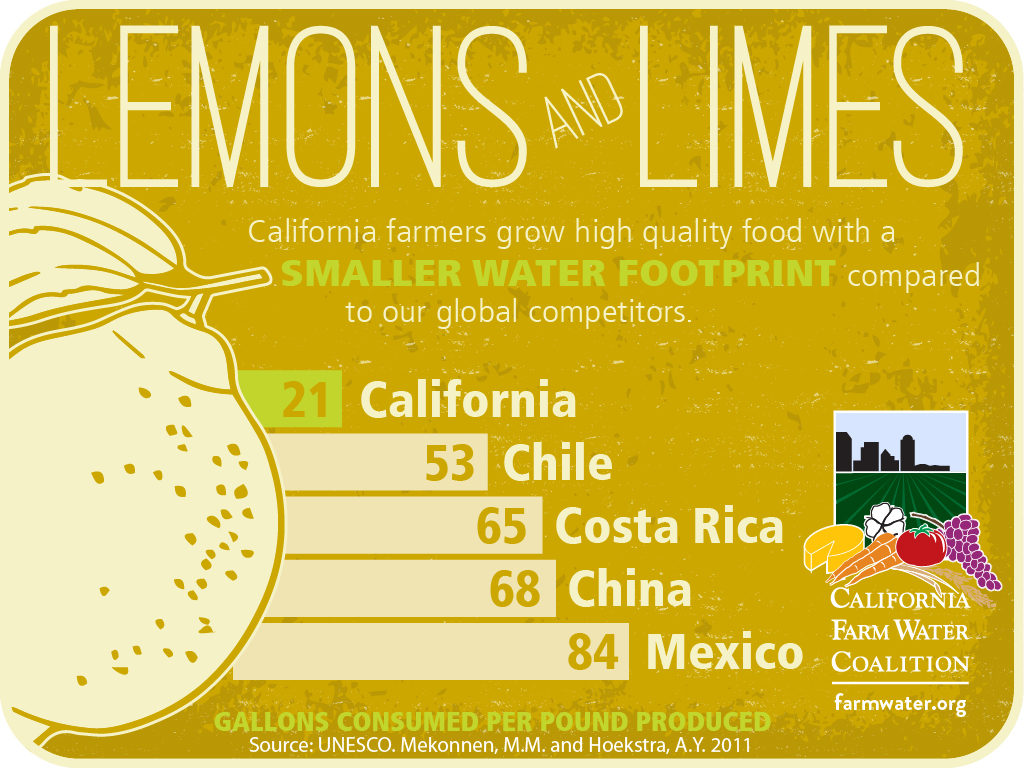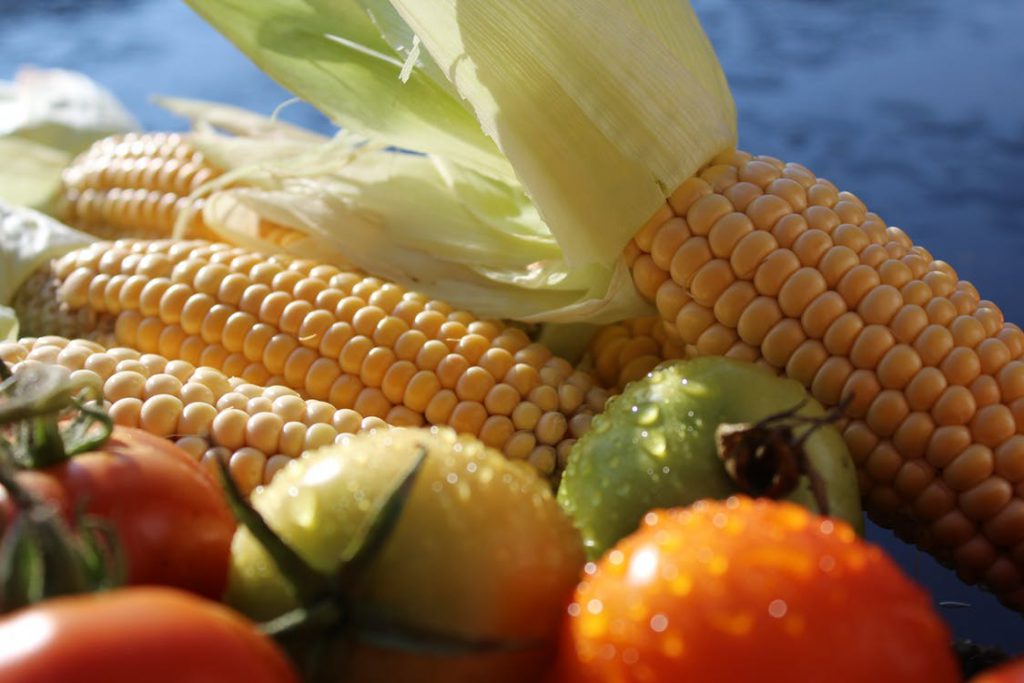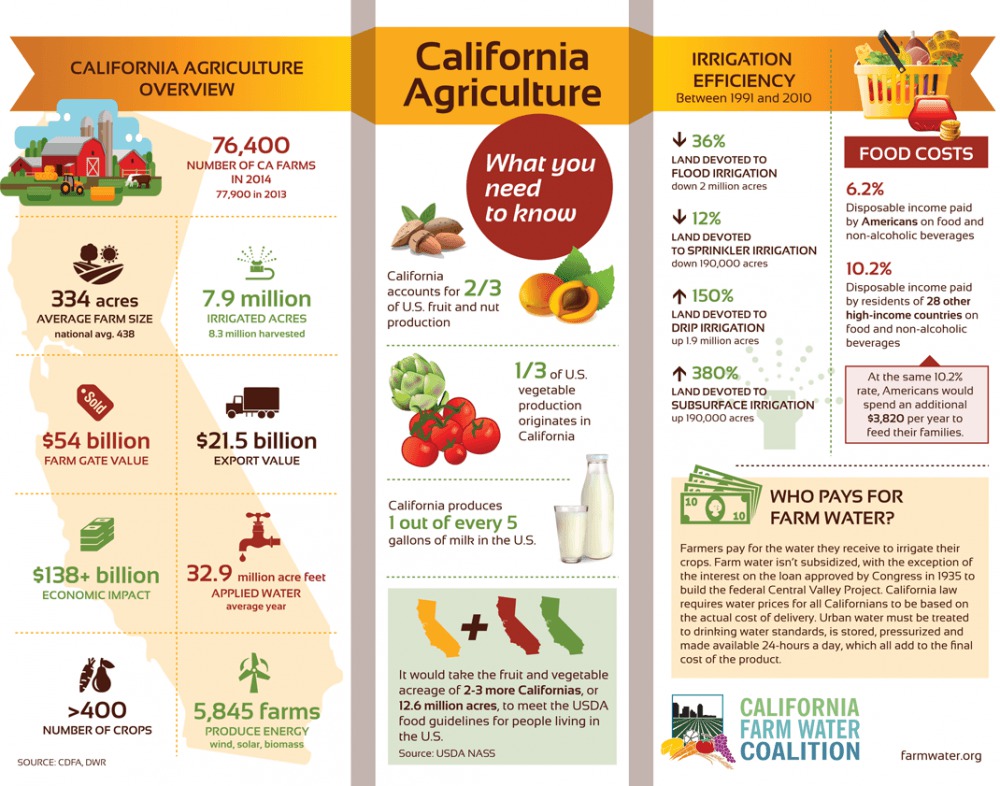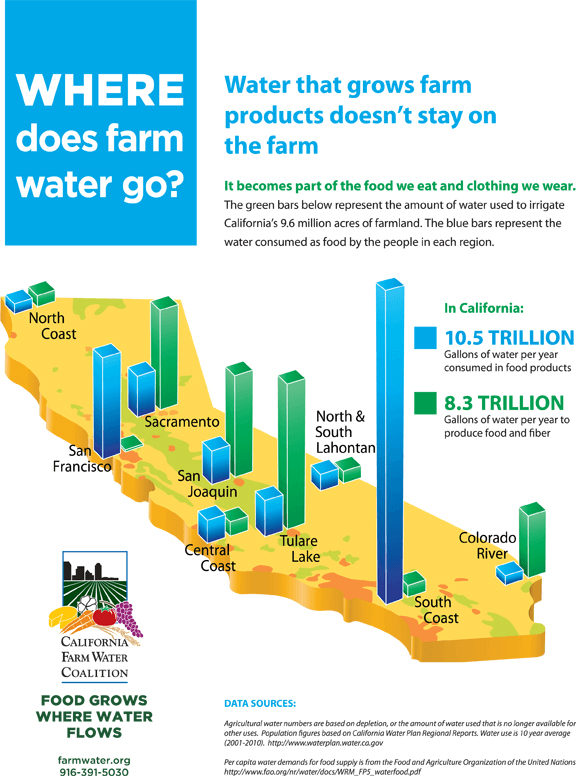California produces safe, affordable farm products using less water than is used in many other countries.
Food Water Footprints, Interactive Fact Sheet
California is a world leader in food and fiber production. Our state produces more than 400 different crops across a wide range of climates, soils, and topographies. Family farmers who are experienced with local conditions adapt to circumstances, using their expert judgement, innovative practices and technologies help to make California the nation’s leading farm state. […]
Now is the time to prepare for our water future.
Now is the time to prepare for our water future. California’s water system is broken; with an inefficient maze of more than 15 federal, state, and other agencies controlling California’s water, our efforts to improve California’s water systems and prepare for uncertainty is threatened. Despite an abundant year of rain and snow, nature alone can’t fix […]
California Agriculture Fact Sheet
Water that grows farm products doesn’t stay on the farm
Water that grows farm products doesn’t stay on the farm. It becomes part of the food we eat and clothing we wear, making consumers the true end users of farm water. California farms consume 8.3 trillion gallons of water in a normal year but farmers aren’t using water frivolously on their lawns or taking long […]



